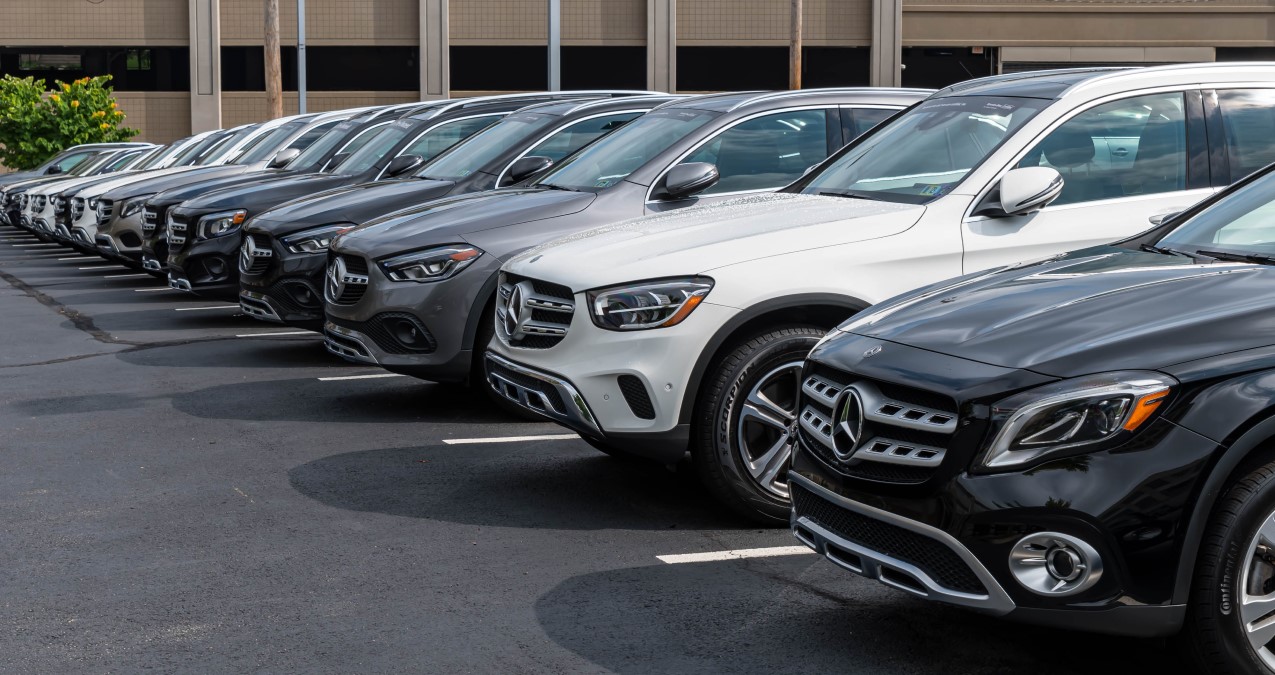The number of new and used cars available for sale in the United States declined in March. Depending on how long new car tariffs last, it could be the start of a long trend. Americans are (at least temporarily) buying more cars than usual. Automakers are importing fewer. And the nation’s supply of used cars is already thin following pandemic-era supply chain disruptions.
New Car Supply Shrinking
Car dealers measure their supply of new cars for sale in a metric they call “days of inventory.” It measures how long it would take them to sell out of cars at today’s sales pace if they couldn’t acquire new ones.
Each dealership tailors its approach to the community it serves. But an old industry guideline tells dealers to keep roughly 60 days on the lot, with another 15 in transit or on order, for a total of 70.
Related: Average New Car Price Held Steady in Pre-Tariff Sales Surge
Over most of the last year, most car brands were well over that target. But they’re rapidly crashing back toward it, with many likely to fall beneath it this month.
Under pressure from the new tariffs, Americans are heading to car dealerships to buy the last cars imported at pre-tariff prices.
As March began, the average brand had a 91-day supply. When it wrapped, they had just 70. The nationwide sales pace in March was more than 17% faster than in February.
Averages are made up of outliers. Toyota and its Lexus luxury brand often have the tightest supply in the automotive industry. They started the month with 38 (Toyota) and 37 (Lexus) and ended it with 32 and 30, respectively.
Bigger changes came at the other end of the scale. Lincoln ended February with 181 days’ supply and March with just 127.
Used Car Supply Shrinking, Too
Used car dealers have run tighter inventory cycles since the height of the COVID-19 pandemic.
Automakers built about 8.1 million fewer cars than they otherwise would have during the peak of the crisis. Those unbuilt cars will never reach the used market, keeping supply tight for years to come.
The average car dealer entered the month with a 43-day supply, but they ended it with just 39 days’ worth, according to vAuto, a company that provides the software that runs car dealerships. Kelley Blue Book and vAuto are both owned by Cox Automotive.
As April opened, the total supply of used vehicles on dealer lots across the U.S. was 2.14 million units, down from 2.18 million units at the start of March and down 1% from a year ago.
March is typically the strongest month for used-vehicle retail sales, as tax refund season sends millions of Americans car shopping. With the added voltage of tariff worries, this year was the strongest vAuto has seen since 2021, and it’s up 12% compared to last year.
What to Expect
Cox Automotive economists started the year predicting that Americans would buy 16.3 million cars in 2025. In light of the new tariffs, they’ve dropped their forecast to 15.6 million.
Senior Economist Charlie Chesbrough says, “I expect we’ll see relatively strong sales activity for a month or two, but prices will rise, and sales will slow noticeably before the end of Q2.” Automakers and dealers, he says, “will be pulling back on incentives immediately as the rush to sell existing inventory declines.”
Chesbrough also points out that dealers might place more value on each car already in their inventory, as the “replacement costs will be much higher” for each model sold. “And, future supply availability may be vulnerable, so the motivation to sell may be changing as well, and it is moving away from the buyer’s favor,” he adds.
Cox Automotive economists predict, “As a result of these tariffs and the tightening inventory, and without a policy change in Washington, consumers should anticipate higher prices and fewer discounts on new vehicles by summer.” Sales will slow, and automakers will slow production. “Additionally, some models may be discontinued as automakers adjust their strategies to cope with the new economic landscape,” they write.
By the second quarter, “tighter supply and higher prices will likely mirror the conditions we saw in 2021 when the chip shortage affected global vehicle production.” However, Americans will likely not have the help of the government financial relief programs that sent checks to most households during the pandemic. That could slow car sales even further.








